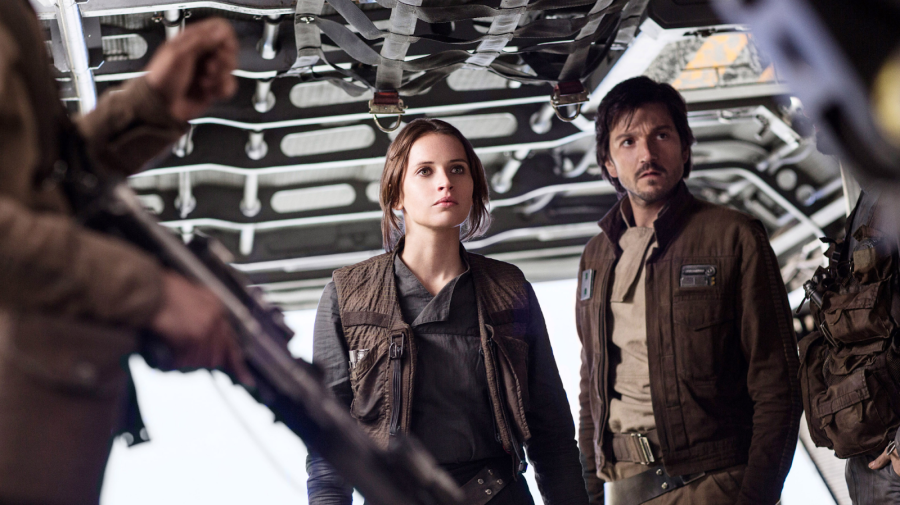
On September 21, the first three episodes of Andor drop on Disney+. But before we dive into everything you need to know about Andor, the new Star Wars series starring Diego Luna (Y tu mamá también) as the titular rebel Cassian Andor, we need to talk about Disney’s approach to making original shows. Seriously — it all ties into Andor, by way of Rogue One: A Star Wars Story (2016), the film that introduced us to Cassian.
Do We Really Need Another Star Wars Show?
When it comes to Disney+, some of The Walt Disney Company’s greatest strengths — the acquisition of Lucasfilm and Marvel — might also be the source of its downfall. Well, “downfall” might be too strong a word for a company that’s worth nearly $200 billion. But, for me, Disney sure has found a way to erode all of those warm, irrational and irreplaceable feelings of nostalgia when it comes to its tentpole franchises, like Star Wars, simply by churning out too much content.
The key to tapping into fans’ nostalgia isn’t saturating streaming services with the stories and characters we love. In fact, the withholding of more — or, at the very least, staggering releases — makes these stories more precious somehow. While the feature-length films might be on hiatus, a new Star Wars series — either live-action or animated — seems to come out every few months. And very few of them work, or, even more troubling, feel like they were stories worth telling.
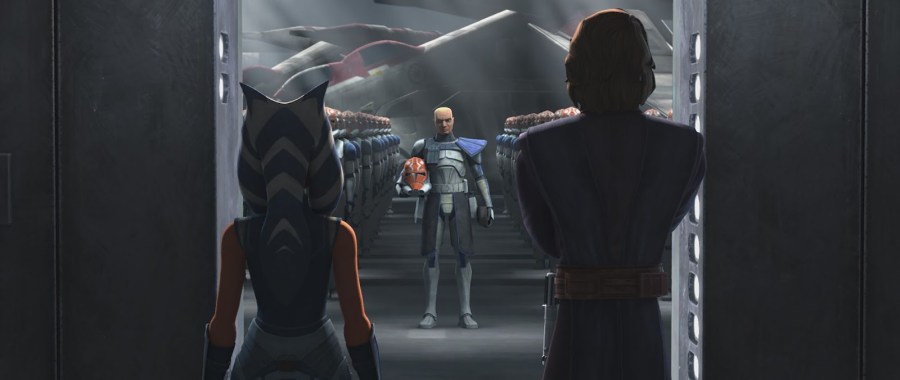
Some of these series have been hits — The Mandalorian (2019–) and the seventh season of The Clone Wars (2020), for example. But others leave a lot to be desired — The Book of Boba Fett (2021–), The Bad Batch (2021–) — even if they were produced by Star Wars icons like Dave Filoni. Many times, these series that center on lesser-known or new characters seem to shoehorn in cameos, just to whet peoples’ appetites.
So, do we really need another Star Wars show? Maybe not. The Star Wars sequel movies (a.k.a. Episodes VII–IX) were not received all that well. See: Oscar Isaac, dead-eyed in Episode IX delivering the ludicrous, “Somehow, Palpatine returned” to get a visual of how so many Star Wars fans feel about the total lack of planning that went into the trilogy. (Of course, other so-called “fans” hated the movies for illegitimate, racist and misogynistic reasons, but let’s not open that jug of curdled blue milk.)
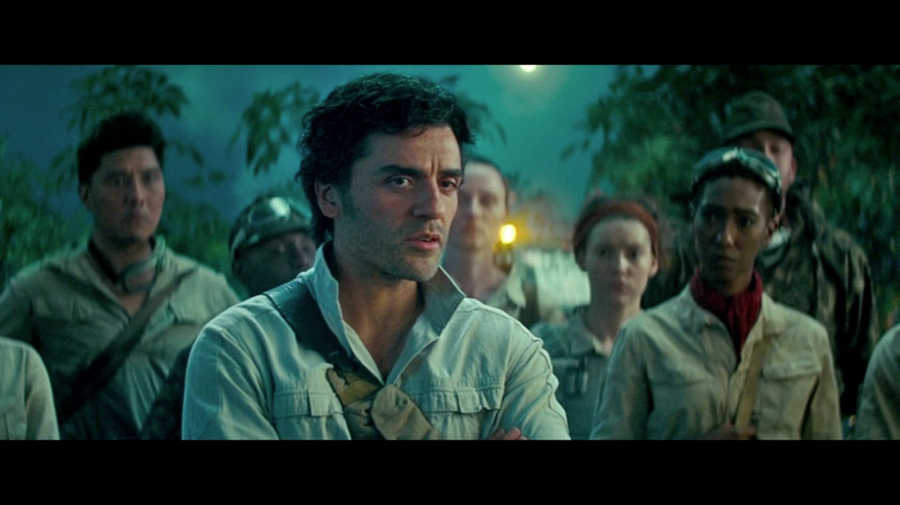
But, the thing is, of the five feature-length, live-action Star Wars films to come out over the last decade — Episodes VII (2015), VIII (2017) and IX (2019) as well as Rogue One and Solo (2018) — one stood apart. Rogue One, to be exact.
Why Did Rogue One Work?
Director Gareth Edwards’ stab at making a non-Skywalker-centric Star Wars film soared for several reasons. First, there’s the rag-tag group of (mostly) new, well-written Rebels who we immediately care about — even if they don’t wield lightsabers or hail from desert planets.
Second, even though we know the ultimate outcome of the Rebels’ efforts, the movie was infused with a sense of urgency; we didn’t know what would happen to Cassian, Jyn Erso (Felicity Jones), Bodhi Rook (Riz Ahmed), Chirrut Îmwe (Hong Kong action star Donnie Yen) and Baze Malbus (Wen Jiang), but we did know they’d successfully nab those Death Star plans.
Although it had its laugh-out-loud moments — thanks in large part to Alan Tudyk’s K-2SO — Rogue One was a grittier, more grounded Star Wars movie. No one was bringing balance to the Force; already, the Jedi and Sith were whispered about, like old stories no one could quite recall. The planets were fresh, inventive. There was a great blend of practical effects and CGI; of familiar John Williams music and composer Michael Giacchino’s (Pixar’s Up) contributions.
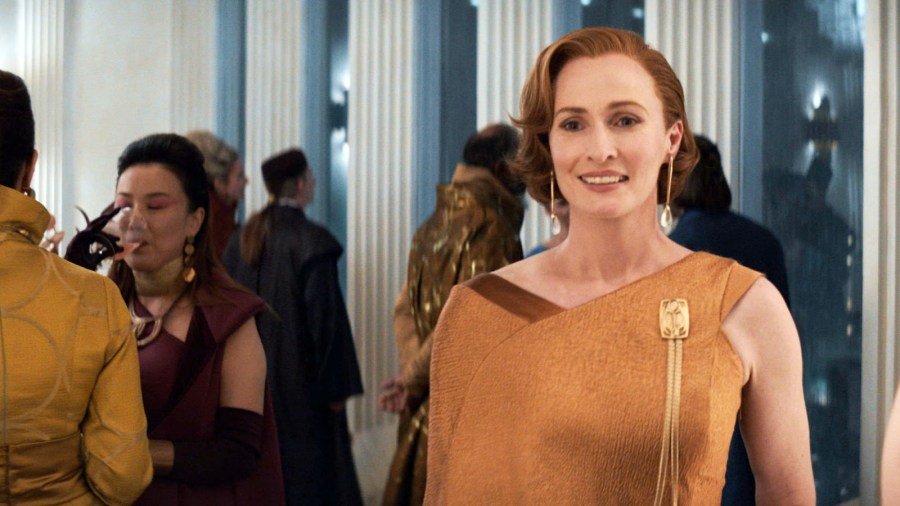
And even if CGI-recreated Grand Moff Tarkin (likeness of Peter Cushing, though acted by Guy Henry) and, later, Leia Organa (likeness of Carrie Fisher, though acted by Ingvild Deila), dipped into the uncanny valley territory, those characters weren’t focal points. It was fun to see familiar faces — both digital and not (Anthony Daniels’ C-3PO and pal R2-D2, Jimmy Smits as Bail Organa, Genevieve O’Reilly donning Mon Mothma’s all-white look). And, of course, suited up — in the case of the Stormtroopers and Darth Vader. But these weren’t the shoehorned cameos Disney has come to love. The characters’ appearances here felt necessary.
Most of all, though, Rogue One gave us a fresh perspective — well, several fresh perspectives — all while feeling like a natural part of this galaxy far, far away.
When Does Andor Take Place in the Star Wars Chronology?
Before we jump into what happened in Rogue One, let’s get a few quick details out of the way. As you might recall, the members of our rag-tag group of Rebels all — spoiler alert! — die on Scarif after completing their vital mission. And that includes Cassian Andor.
In a sense, Andor is a prequel to a prequel. The ending of Rogue One occurs mere minutes before the start of the original film, Star Wars: Episode IV—A New Hope (1977), making Rogue One a prequel to that first installment we all know so well. Andor is set before the events of Rogue One, for obvious reasons, and that makes it a prequel series to a prequel film.
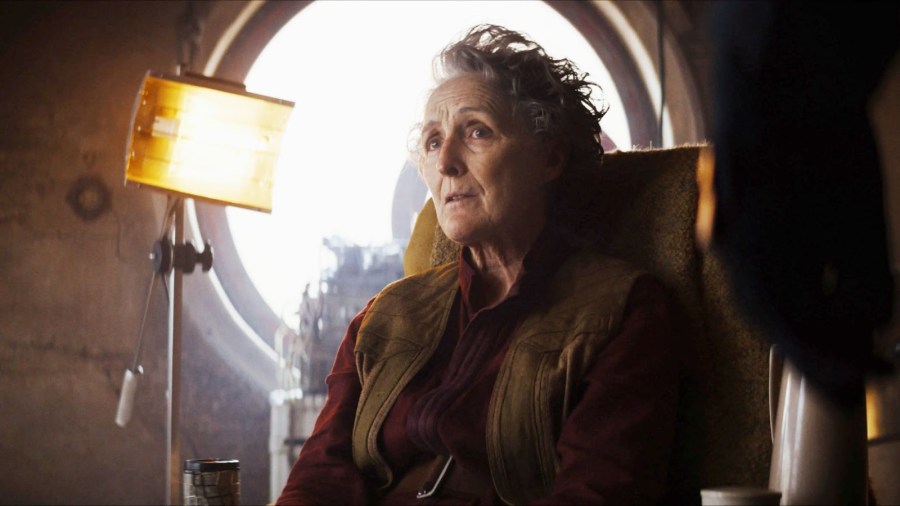
According to showrunner Tony Gilroy, who also co-wrote Rogue One, the first season of Andor takes place some five or so years before the events of Rogue One and, by extension, A New Hope. Set against the backdrop of the Rebellion’s early stages, the 12-episode season will cover a year’s worth of time.
If you’ve watched all things Star Wars, including the animated shows, you might be excited to find out that Andor is set at the same time as Rebels (2014–2018), the first season of which unfolds about five years before A New Hope, too.
What Happened in Rogue One? What to Know Before Watching Andor
Okay, now that we’ve got the somewhat-disorienting timeline stuff out of the way, let’s take a look back at Rogue One. When the film opens, research scientist Galen Erso (Mads Mikkelsen) and his family, including his young daughter Jyn, are in hiding. Soon enough, the film’s primary on-the-ground antagonist, Imperial weapons developer Orson Krennic (Ben Mendelsohn), finds Galen and kills his wife.
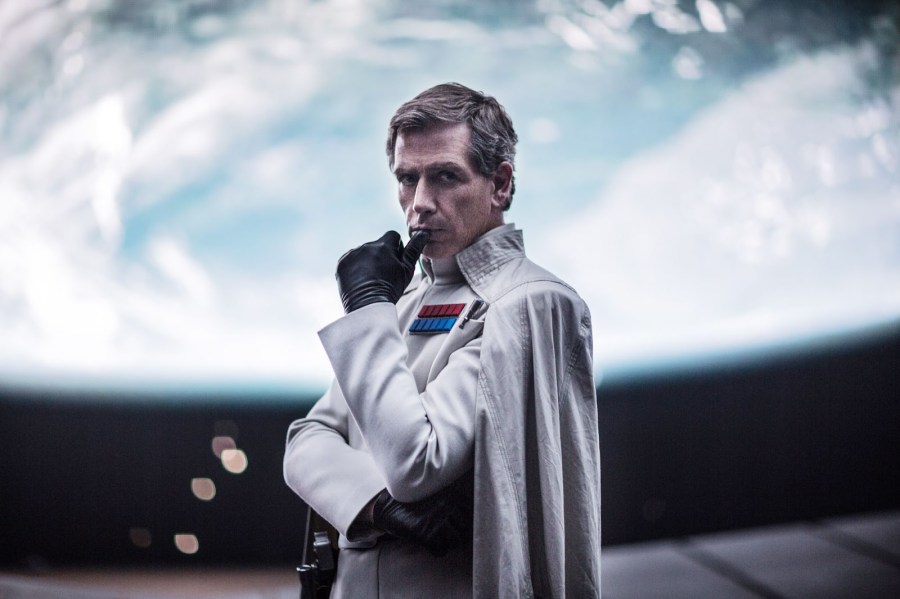
Krennic takes Galen, forcing him to finish the design for the Empire’s impending Death Star superweapon/space station. (You know, the same space station that Mark Hamill’s Luke Skywalker takes down in A New Hope.) Jyn, however, escapes and is taken in by Rebel extremist Saw Gerrera (Forest Whitaker).
Fifteen years have passed. Cargo pilot Bodhi Rook defects from the Empire and delivers a message from Galen to Saw. Meanwhile, the Rebel Alliance intercepts Jyn, who’s been newly freed from an Imperial labor camp. Bail Organa and Mon Mothma convince her to rescue her father, Galen, so that they can learn more about the Death Star plans.
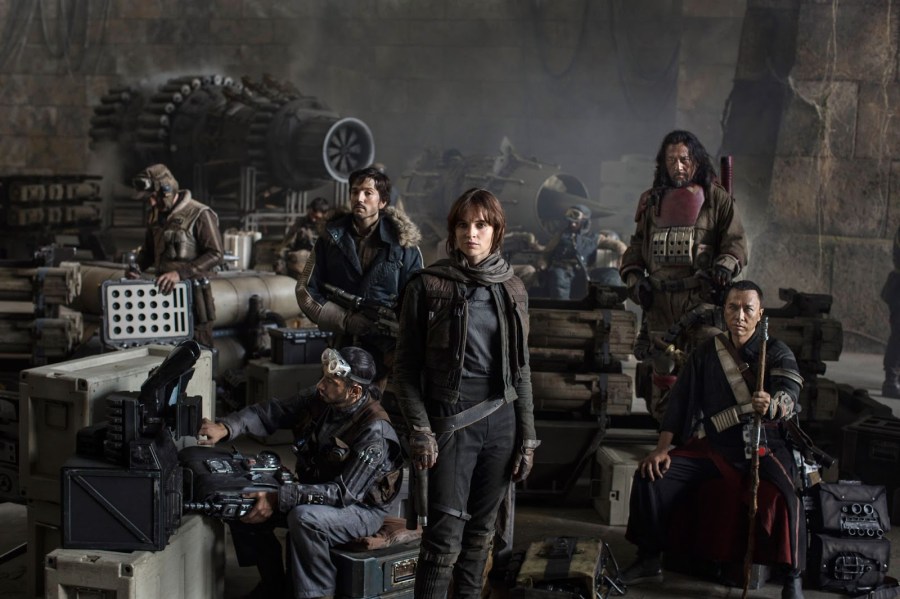
Enter: Rebel intelligence officer Cassian Andor. Bail and Mon Mothma instruct him to accompany Jyn — alongside reprogrammed Imperial droid K-2SO — but tell him to kill Galen on sight. Meanwhile, the Empire is harvesting kyber crystals — you likely know them as part of what powers a lightsaber — from a holy city, eager to power the Death Star with the natural resource.
Thanks to a blind, Force-believing warrior Chirrut and his mercenary friend Baze, Jyn and Cassian make contact with Saw, who’s been holding Bodhi captive. Saw relays Galen’s message to the Rebels at large: Galen secretly built a vulnerability in the Death Star — the very opening Luke exploits in Episode IV — and that the schematics are stored at an Imperial data bank on Scarif.
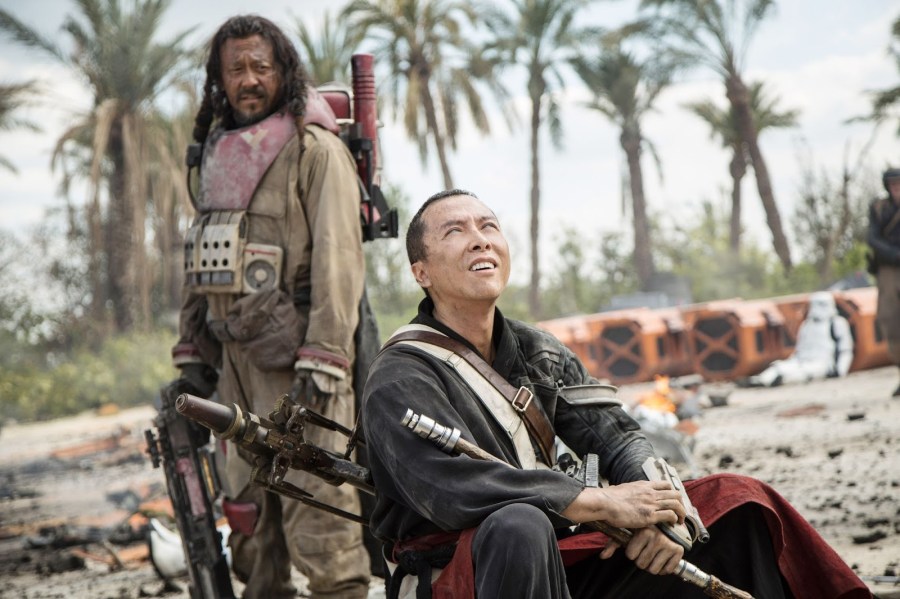
Krennic, meanwhile, tests out the planet-destroying capabilities of the Death Star. Jyn, Cassian and co. escape, but Saw goes down with the metaphorical ship. And while Krennic thinks he’s all that, Darth Vader believes otherwise, telling him — with a side of Force choking — to ensure no further breaches by Rebels.
Later, Cassian decides to spare Galen’s life; the research scientist dies anyway in his daughter’s arms. Propelled to action, Jyn tries to rally the Rebel Alliance to raid Scarif. When the Rebellion’s leadership says no, Jyn, Cassian, Chirrut, Baze, Bodhi, K-2SO and a small group of Rebel volunteers head to Scarif on a stolen Imperial ship.
One by one, our team gives their lives to complete the mission — it’s a tear-jerker. Eventually, a Rebel fleet arrives and takes down the planetary shield so that Cassian and Jyn can transmit the schematics. Moments after the Rebels secure the schematics, Grand Moff Tarkin, who’s taken control of the Death Star’s trajectory, fires a low-power shot at Scarif to destroy the data bank (and kill Krennic). The resulting blast engulfs the whole area, killing Cassian, Jyn and the other forces on the ground.
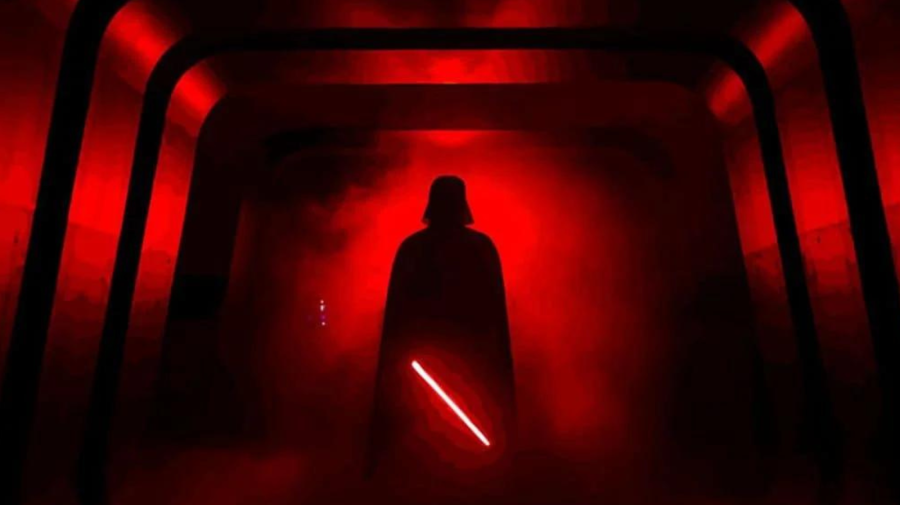
And, as you likely recall, that all leads into the Rebels handing off those prized Death Star schematics up in orbit as Vader storms in, killing anyone in his path. For a moment, the ship carrying the plans gets away, the plans safely in Leia Organa’s possession, but we all know how that’ll go for her a few minutes later.
Following the Rogue One Blueprint: What Is Andor About?
Part of the reason we’re optimistic about Andor? Showrunner and writer Tony Gilroy, who co-wrote Rogue One. It seems like Gilroy — who’s described the show as a bit “film noir” and its two seasons as being two halves of a novel — is bringing that grittier, more grounded sensibility to the show. And that works really well for the sorts of stories Rogue One and Andor aim to tell.
“It’s the journey of a migrant, which to me is everything I come from,” Luna said in an interview. “That feeling of having to move is behind this story very profoundly.” Other Star Wars entries might not handle such topics as deftly — or, you know, they’ve been very Disney-fied. These are the kinds of stories Star Wars has been missing.
Luna’s sentiment recalls a crucial moment in Rogue One: after dragging her feet, Jyn, our Rebel crew’s only white member, is somewhat suddenly moved to spearhead the mission to retrieve the schematics in the wake of her father’s death. The horrors of the Empire are finally real to her in a way they weren’t before. And Cassian calls her out on that.
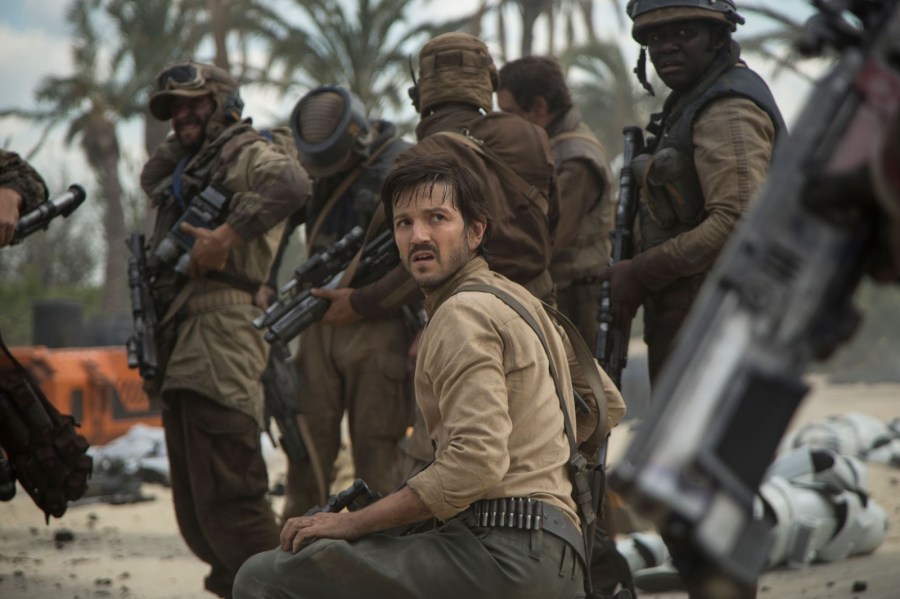
“We don’t all have the luxury of deciding when and where we want to care about something. Suddenly the Rebellion is real for you. Some of us live it. I’ve been in this fight since I was six years old,” Cassian tells Jyn. “You’re not the only one who lost everything. Some of us just decided to do something about it.”
In Rogue One, Cassian rallies some Rebel volunteers to join Jyn’s unauthorized mission to secure the Death Star schematics, explaining that all the terrible things he’s done were on behalf of the Rebellion. In Andor, we’ll get to see some of those moments as Cassian evolves from a lost, cynical thief into a revolutionary who gives his life for the Rebellion. We’ll also learn more about Rebel leader Mon Mothma. “What you’ve been told, what’s on Wookieepedia… is really all wrong,” Gilroy says of the character.
For Luna, Andor is about the revolutionary that we can become “to change things, to stop war, to make the world a livable place”. After all, as Cassian Andor says, rebellions are built on hope.






